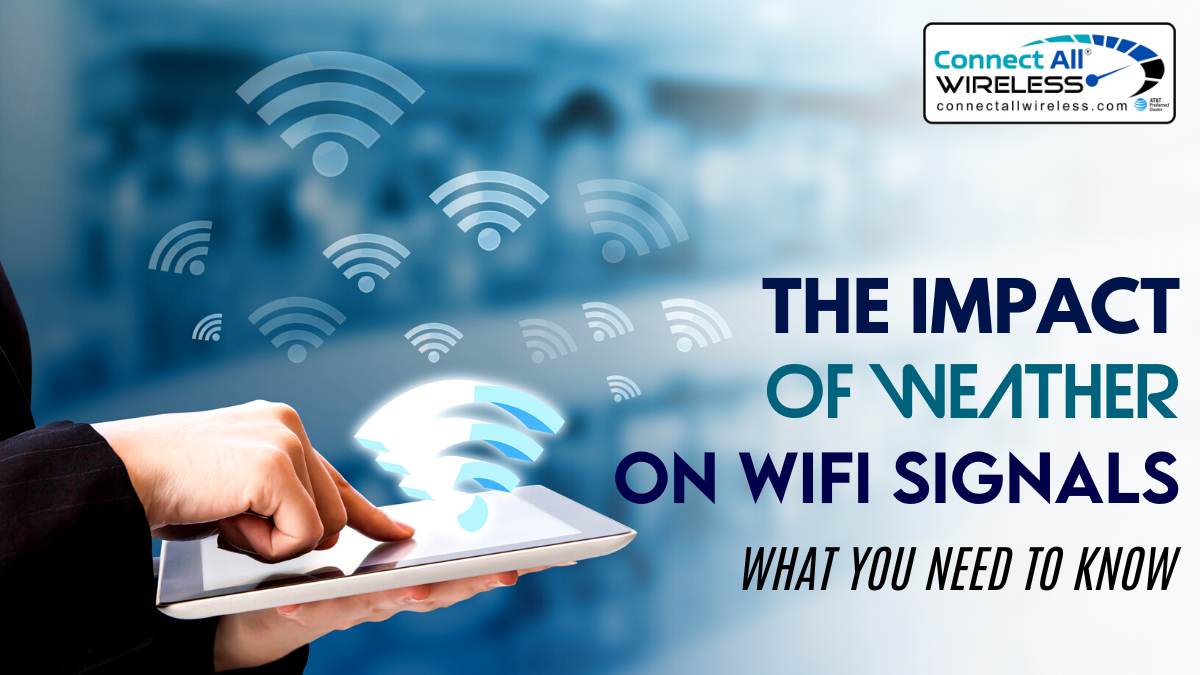In our increasingly interconnected world, a reliable and fast internet connection is crucial for both work and leisure. However, one factor that often goes overlooked in the quest for seamless connectivity is the weather. Believe it or not, the weather can have a significant impact on WiFi signals, affecting their strength and stability. In this blog post, we'll explore the various ways in which weather conditions can influence your WiFi performance and what you can do to mitigate these effects.
Rain: The Silent Disruptor
Rain, though seemingly harmless, can disrupt WiFi signals in unexpected ways. Raindrops can absorb and scatter radio waves, leading to signal attenuation. This means that during heavy rainfall, your WiFi signals may have a harder time reaching their intended destination. While light rain might not cause noticeable issues, prolonged or heavy rainfall can degrade your WiFi connection. To counter this, ensuring your router is well-protected and positioned optimally can make a significant difference.
Fog: The Unseen Hurdle
Fog, with its dense water droplets suspended in the air, can be another stealthy adversary for WiFi signals. The water droplets can absorb and refract radio waves, leading to signal loss and increased latency. In areas prone to frequent fog, consider adjusting the placement of your router or investing in signal boosters to counteract the signal degradation caused by this atmospheric phenomenon.
Snow: A Blanket for Signals
Snowfall can have a similar impact to rain, as the accumulating snowflakes can absorb and scatter radio waves. Additionally, the reflective properties of snow can create signal interference. If you live in a region with harsh winter conditions, it's advisable to keep your router elevated and away from direct contact with snow. Regularly clearing snow from around your router's antennas can also help maintain a stable connection during snowy weather.
Thunderstorms: Lightning Strikes and Power Surges
Thunderstorms bring with them not only rain but also the threat of lightning strikes. Lightning can cause power surges that may damage your router and other network equipment. To safeguard your devices, invest in surge protectors and consider unplugging your router during severe thunderstorms. Additionally, power outages during storms can disrupt your internet connection, so having a backup power source for your router can help ensure uninterrupted connectivity.
High Temperatures: Overheating Woes
While high temperatures may not directly impact radio waves, they can affect the performance of your WiFi equipment. Routers, especially those placed in confined spaces or exposed to direct sunlight, can overheat. This can lead to reduced performance and even hardware damage. Ensure proper ventilation for your router, consider relocating it to a cooler area, and if necessary, use cooling solutions to prevent overheating during hot weather.
Wind: The Unseen Mover
Strong winds can indirectly affect WiFi signals by causing movement in the surrounding environment. Trees swaying, buildings vibrating, and other structures in motion can disrupt the path of radio waves, leading to signal interference. While you can't control the wind, positioning your router in a stable location and ensuring a clear line of sight between devices can help mitigate the impact of windy conditions.
Conclusion:
In conclusion, understanding the intricate relationship between weather conditions and WiFi signals is paramount for maintaining a seamless online experience. The vulnerability of signals to rain, fog, snow, thunderstorms, high temperatures, and wind underscores the need for proactive measures. Whether you're in Michigan or any other region, optimizing your network's performance becomes especially crucial. As we anticipate the evolution of connectivity technologies, like 5G WiFi in Michigan, it's clear that staying ahead involves not only embracing advancements but also fortifying our networks against the unpredictable forces of nature.
By strategically placing routers, investing in signal-enhancing solutions, and safeguarding against power surges, users can ensure that their connection remains robust, regardless of the weather whims. As we navigate the dynamic landscape of technology, adapting to the nuances of both innovation and environmental challenges will be key to unlocking the full potential of our interconnected world.


